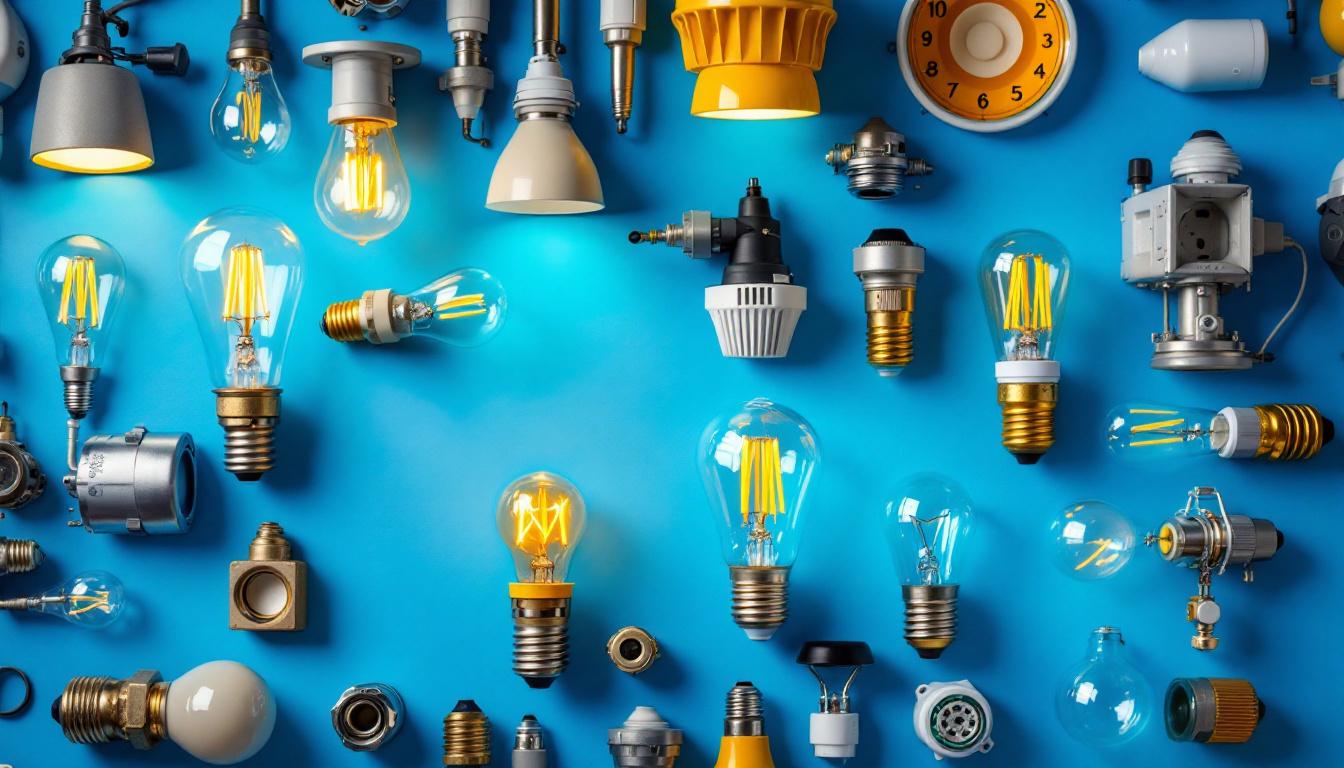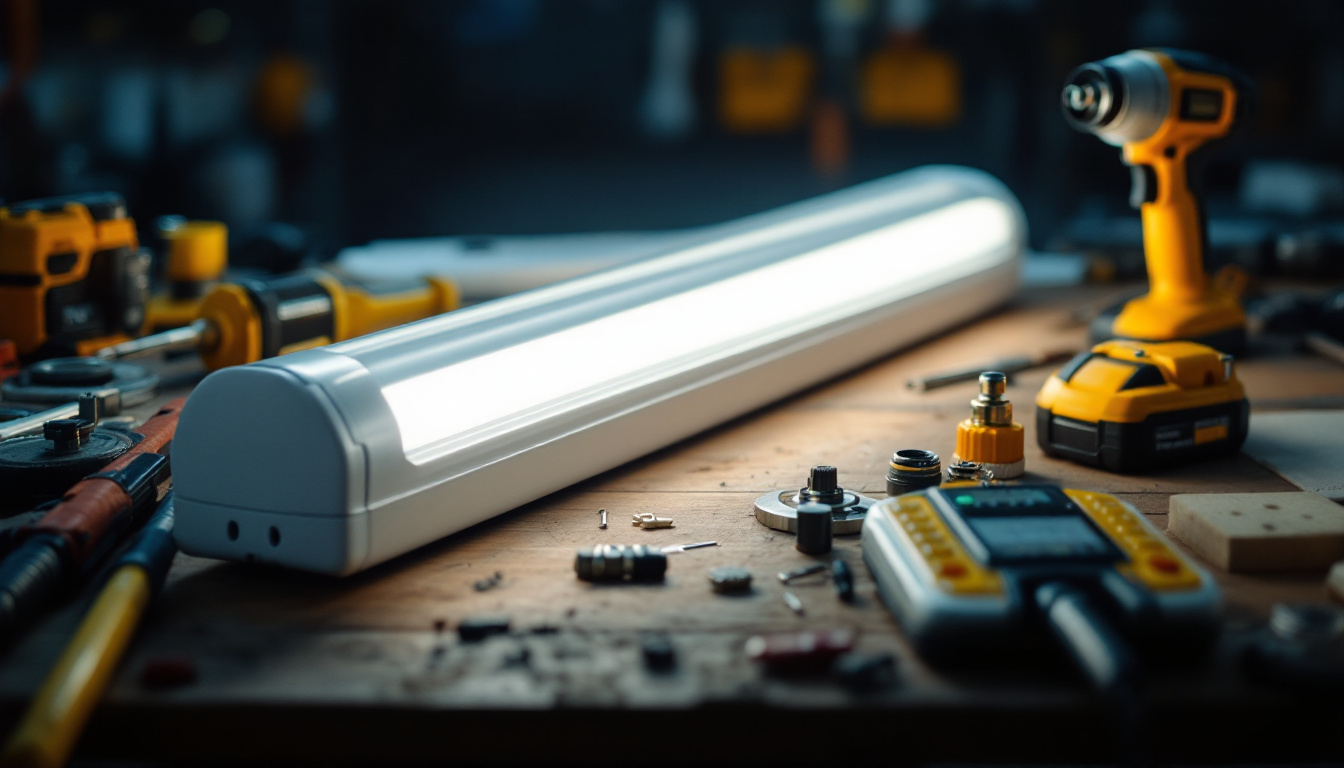
In the ever-evolving world of lighting technology, tubular LED lamps have emerged as a game-changer for both residential and commercial applications. For lighting contractors, understanding the intricacies of these lamps is essential to offer clients the best solutions while maximizing efficiency and sustainability. This article will delve into the advantages of tubular LED lamps, installation techniques, and tips for contractors to enhance their expertise in this field.
Tubular LED lamps are designed to replace traditional fluorescent tubes, offering significant improvements in energy efficiency, longevity, and light quality. These lamps come in various sizes and configurations, making them suitable for a wide range of applications, from office spaces to industrial settings.
One of the primary benefits of tubular LED lamps is their energy efficiency. Compared to traditional fluorescent tubes, LED lamps consume significantly less power while providing the same or even greater light output. This not only reduces electricity bills for clients but also contributes to a smaller carbon footprint.
Another key advantage is their lifespan. Tubular LED lamps can last up to 50,000 hours or more, drastically reducing the frequency of replacements. This longevity translates into lower maintenance costs and less waste, making them an environmentally friendly choice. Moreover, the durability of these lamps means they are less prone to breakage, which is particularly beneficial in high-traffic areas where lighting fixtures may be subjected to accidental impacts.
In addition to energy savings, tubular LED lamps offer superior light quality. They provide instant illumination without flickering, and their color rendering index (CRI) is often higher than that of traditional fluorescent lamps, resulting in more accurate color representation. This feature is particularly important in settings like retail and art galleries, where color accuracy is crucial. Furthermore, the absence of harmful substances like mercury, which is commonly found in fluorescent tubes, makes LED lamps a safer option for both users and the environment.
Versatility is another hallmark of tubular LED lamps. They are available in various color temperatures, from warm white to cool daylight, allowing contractors to tailor lighting solutions to meet specific client needs. This adaptability enhances the overall aesthetic of a space, making it more inviting and functional. Additionally, many tubular LED lamps are compatible with dimming systems, providing further flexibility in creating the desired ambiance. This feature is particularly advantageous in multi-purpose spaces where lighting requirements may change throughout the day or during different events.
Proper installation is critical for maximizing the performance and lifespan of tubular LED lamps. Lighting contractors should be well-versed in the various installation methods to ensure a seamless transition from traditional lighting systems to LED technology.
Contractors can choose between direct replacement and retrofit options when installing tubular LED lamps. Direct replacement involves swapping out existing fluorescent tubes with LED equivalents, often requiring minimal modifications to the existing fixtures. This method is quick and cost-effective, making it an attractive option for clients looking to upgrade without extensive renovations.
On the other hand, retrofit installations may involve replacing the entire fixture to accommodate the new LED technology. This option can provide additional benefits, such as improved energy efficiency and enhanced aesthetics. Contractors should assess the specific needs of each project to determine the most suitable approach. For instance, in commercial settings where lighting quality is paramount, a retrofit might not only offer better light distribution but also allow for the integration of smart lighting controls, further enhancing energy savings and user experience.
When installing tubular LED lamps, understanding wiring configurations is essential. Many LED tubes are designed to work with existing ballasts, while others require direct wiring to the line voltage. Contractors should familiarize themselves with the different types of LED lamps available and their wiring requirements to ensure a successful installation.
For those opting for direct wiring, it is crucial to bypass the ballast, as it can lead to compatibility issues and reduce the lifespan of the LED lamp. Properly following manufacturer guidelines during installation will help contractors avoid common pitfalls and ensure optimal performance. Additionally, it’s important to consider the gauge of the wiring used in the installation; using the appropriate wire size can prevent overheating and ensure safety. Furthermore, contractors should also be aware of local electrical codes and regulations, as compliance is essential not only for safety but also for the longevity of the installation. This knowledge can also help in troubleshooting potential issues that may arise during or after the installation process, ensuring that the lighting system operates efficiently and effectively for years to come.
To master the art of working with tubular LED lamps, lighting contractors should adopt best practices that enhance their skills and knowledge in this area. Staying informed about industry trends and advancements is vital for maintaining a competitive edge.
Participating in training programs and workshops focused on LED technology can significantly enhance a contractor’s expertise. Many manufacturers offer courses that cover the latest innovations, installation techniques, and troubleshooting methods. By investing time in education, contractors can keep up with the rapidly changing landscape of lighting technology.
Additionally, networking with other professionals in the industry can provide valuable insights and foster collaborative opportunities. Engaging with peers allows contractors to share experiences, challenges, and solutions, ultimately leading to improved service quality for clients. Joining professional organizations or attending industry conferences can also open doors to new partnerships and resources that may not be readily available through traditional channels.
Lighting contractors must remain aware of local and national regulations regarding energy efficiency and safety standards. Compliance with these regulations is crucial for ensuring that installations meet legal requirements and client expectations. Regularly reviewing updates from relevant authorities will help contractors stay informed and prepared for any changes that may impact their work.
Furthermore, understanding the environmental impact of lighting choices can guide contractors in making informed recommendations to clients. Promoting energy-efficient solutions aligns with sustainability goals and enhances the contractor’s reputation as a responsible professional. By advocating for eco-friendly products and practices, contractors can not only help clients save on energy costs but also contribute to a larger movement towards environmental stewardship in the construction and renovation sectors.
Moreover, lighting contractors should familiarize themselves with the various certifications available for energy-efficient products, such as ENERGY STAR and the DesignLights Consortium (DLC) certification. These certifications can serve as a valuable resource for contractors when recommending products to clients, ensuring that they are choosing high-quality, reliable options that meet stringent performance criteria. By leveraging these certifications, contractors can build trust with their clients and position themselves as knowledgeable experts in the field.
Effectively marketing tubular LED lamps to clients requires a strategic approach that emphasizes the benefits and value of these products. Lighting contractors should be prepared to educate clients on the advantages of switching to LED technology, addressing any concerns they may have.
One of the most compelling arguments for switching to tubular LED lamps is the potential for cost savings. Contractors should provide clients with clear comparisons of energy consumption and maintenance costs between traditional lighting and LED options. Presenting case studies or testimonials from previous clients can further reinforce the financial benefits of making the switch.
Additionally, discussing available incentives, such as rebates or tax credits for energy-efficient upgrades, can motivate clients to invest in tubular LED lamps. Providing comprehensive information on these financial opportunities can enhance the contractor’s credibility and encourage clients to take action. Furthermore, it is beneficial to illustrate the long-term savings associated with LED lamps, which can last up to 25,000 hours or more, significantly reducing the frequency and costs of replacements compared to traditional incandescent or fluorescent options.
Beyond cost savings, contractors should also highlight the aesthetic and functional advantages of tubular LED lamps. Demonstrating how different color temperatures and light qualities can enhance a space’s ambiance will resonate with clients looking to improve their environment.
Using visual aids, such as before-and-after photos or lighting simulations, can effectively convey the transformative impact of tubular LED lamps. Engaging clients in discussions about their specific lighting needs and preferences will help tailor solutions that align with their vision. Additionally, it’s important to inform clients about the versatility of tubular LED lamps, which can be used in various applications, from residential settings to commercial spaces, thereby ensuring that they can achieve the desired effect in any environment. Discussing the adaptability of these lamps in terms of dimming capabilities and smart technology integration can also pique clients’ interest, showcasing how tubular LEDs can seamlessly fit into modern, energy-efficient designs.
Mastering tubular LED lamps is essential for lighting contractors seeking to provide cutting-edge solutions to their clients. By understanding the advantages of these lamps, employing effective installation techniques, and adopting best practices, contractors can position themselves as experts in the field. Additionally, effectively marketing the benefits of tubular LED lamps will not only enhance client satisfaction but also contribute to a more sustainable future.
As the lighting industry continues to evolve, staying informed and adaptable will be key to success. Embracing the potential of tubular LED lamps will empower contractors to meet the diverse needs of their clients while fostering a more energy-efficient and environmentally friendly world.
Ready to elevate your lighting projects with the efficiency and sustainability of tubular LED lamps? At LumenWholesale, we provide lighting contractors with the highest quality, spec-grade lighting products at unbeatable wholesale prices. Say goodbye to inflated markups and hello to a vast selection of reliable, high-performance lighting that meets the most rigorous industry standards. With free shipping on bulk orders, you can stock up on superior lighting solutions without any hidden fees. Make the smart choice for your business and your clients by choosing Wholesale Lighting at the Best Value with LumenWholesale. Your path to expertly mastering tubular LED lamps starts here.

Discover how portable LED technology is revolutionizing lighting projects by boosting efficiency and flexibility.

Discover the essential guide to light bulb fittings with insights from top lighting contractors.

Discover the crucial role fluorescent tube ballasts play in modern lighting solutions.

Explore the advantages and drawbacks of LED outdoor lighting for contractors.